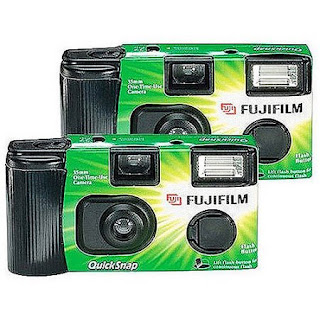Photography is a very important part of the visual art curriculum, and is often overlooked due to lack of resources. Since the development of the daguerreotype process in the 1820s, photographers have been able to capture integral moments in history and expand upon the photographic process. Fast forward to today, where due to smartphones with cameras, photography has become such a normal part of our daily lives.
Photography has been difficult to achieve in many art
classes at all age levels. Many schools
lack the resources for students to have their own cameras (either film or
digital), as well as the means to edit and produce the photographs (darkroom or
printers). Even if we wanted to use cel
phone cameras just to learn and practice the perspective and angles to take the
shots, many schools do not allow phones while school is in session. So the question is with the challenges faced,
how can we incorporate photography in our classes, especially at the elementary
and middle school levels?
Have discussions
about photography. Even if the
process and production isn’t there, talk about how photography is art. Talk about how photography changed the world,
or how it documents history. Talk about
perspective, angles, lighting, and space.
You can even create a game of identifying photography vocabulary with
images. Having students know the
photography vocabulary when taking their own photos is better than not knowing
how to use their eye when capturing a moment in time.
Play with sun
sensitive paper. This type of paper
can be found in many art supply catalogs, and is an easy way to explain the
exposure process to your students. Since
the paper creates a positive/negative images in a small amount of time, you can
have students design their exposed spaces to demonstrate elements/principles,
such as patterns, balance/symmetry, value, etc.
You can also play with different light sources and the effect that
various exposure times show in the process.
Since water is used to help process the finished exposures, it’s the
simplest process for elementary students.
Explore more of the
cyanotype process. You know the sun
sensitive paper you just read about? The
paper is used for cyanotype prints.
There is also a more intense process involved that, depending on the
materials available, can be accomplished with middle or high school
students. I recently came across a blog
called obscura-works.com that shared a class project. The author had created a large queen-size bed
sheet cyanotype by soaking the sheet in cyanotype solution at home, then having
volunteers help in covering the sheets before exposing it with students lying
on top for a selected time. The finished
result was an amazing sheet with student silhouettes hung for display!
Create a pinhole camera. There are many websites you can search that
share how to create your own pinhole camera using shoeboxes or Pringles
cans. You may not be able to have a
photograph product, but in making the pinhole camera, you can have students
observe how the exposure process is achieved.
If you teach middle or high school students, you may have resources
available to be able (such as a school darkroom or local photographer) to
process photo paper for show box pinhole cameras!
Find a use for your
old film camera. Do you still own a
film camera that you no longer use? Why
not have your students see what it’s like to snap a photo with film? Load a roll of film or two and have each
student snap a photo. This is only an
option if you have the camera lying around and no longer wish to use it. You can also purchase a disposable camera for
this option as well! After taking the
film in to be developed, share the photos with your students and have a
critique about the their captured moments.
Tablets Available? Explore the camera options. If you have access to tablets (but not for
digital cameras), consider experimenting with the camera option. Tablets are more portable, so students can
move more around the room or school.
Tablets could also contain apps that can manipulate photos that have
been taken and can teach more about the editing process.
When in doubt, look
for used. There are many digital
cameras that are still in good, working condition and sold for resale. In purchasing digital cameras, you can gather
some that are even a few years old, find memory cards at an affordable price,
and keep them in your classroom for student use. Older digital cameras can still connect
through USB ports and print out in your classroom printers, if available.
Even with no darkroom or access to top notch cameras and
printers, you can still bring elements of photography to your students at the
elementary level!





